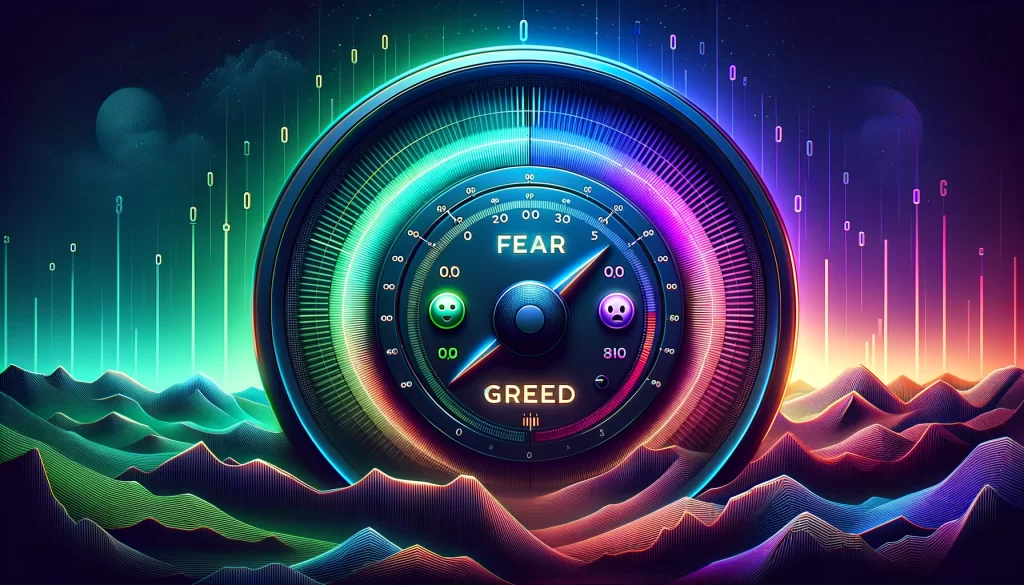Key Crypto Metrics and What They Mean
Despite its continued growth in popularity, there are still many elements of the cryptocurrency industry that many individuals don’t understand, especially with regards to trading and investing in the asset class.
Below, we’ve broken down some of the most important crypto metrics that everybody looking to invest in crypto should be aware of.
Market Capitalisation

Traditionally speaking, market capitalisation, or market cap, refers to the total value of a company’s shares. Within crypto, the market cap of a cryptocurrency is calculated by multiplying its circulating supply by the price of a single coin or token, which provides investors with an overall value for the asset.
The market capitalisation should be thought of as how much it would cost to buy all the tokens of a currency in circulation. If you are familiar with buying shares, market cap works in the same way.
For example, if the price of a single bitcoin is $60,000 and there are 19,700,000 BTC in circulation, then bitcoin’s total market cap would be $1,182,000,000,000 ($1.182 trillion).
Market cap is often used to gauge the stability of a cryptocurrency. Typically, the larger the market cap, the more stable its price action will be, while the smaller the market cap, the more volatility it will likely experience. Remember, however, that even bitcoin can be subjected to significant price changes within a small period of time.
Although it’s not necessarily definitive, cryptocurrencies are typically broken down into the following categories:
- Large Cap – cryptocurrencies with a market cap of more than $10 billion
- Mid Cap – cryptocurrencies with a market cap between $1 billion and $10 billion
- Small Cap – cryptocurrencies with a market cap of less than $1 billion
- Micro Cap – cryptocurrencies with a market cap of less than $300 million
It’s also important to note that market capitalisation is a better way of comparing value between two assets, rather than by looking at their individual prices. For example, the price of a cryptocurrency token could be double that of another crypto token, but it could still have a much smaller market cap, which means the “cheaper” crypto asset still technically has a higher value.
Fully Diluted Market Capitalisation
While “market cap” refers to the total value of a cryptocurrency, given the number of coins or tokens that are currently in circulation, a fully diluted market cap (FDV) is calculated based on the assumption that the asset’s maximum supply is being circulated.
Using the bitcoin example above, with a maximum supply of 21,000,000 BTC, bitcoin’s fully diluted market cap would be $1,126,000,000,000 ($1.126 trillion). This is calculated by multiplying the current price of the asset by its maximum total supply (in this case, $60,000 by 21,000,000).
FDV does not make any predictions about the future price of an asset. Instead, it predicts the future market cap of a cryptocurrency, if all coins/tokens were to be released into the market at the asset’s current price. Investors will often use this to determine whether or not a cryptocurrency is overvalued or undervalued.
Volume

Trading volume refers to the amount of a cryptocurrency – in terms of a monetary value – that was traded within a set period of time, usually 24 hours. This is done by calculating the sum of all buy and sell transactions during that time frame.
Volume is a useful crypto metric for traders as it can demonstrate the level of interest in a particular asset. For example, a sharp increase in trading volume could act as confirmation of a breakout or breakdown. Higher volumes suggest that more people (or at least, more money) are involved in the trading of the cryptocurrency, which could cause a continuation of a particular trend.
Steadily increasing volumes over time could also indicate a growing interest in the crypto project, while lower trading volumes could demonstrate a loss of momentum in an upwards trend, potentially signaling an incoming trend reversal.
Higher volumes can often be associated with lower volatility. If the daily trading volume for a cryptocurrency is $20 billion, for example, then a large investor buying $5 million worth of the currency will not have a significant impact on its price. However, this same purchase could drastically impact a cryptocurrency with a daily trading volume of $50 million.
Bitcoin Dominance
Bitcoin dominance looks at the ratio of bitcoin’s market capitalisation compared to the combined market cap of every other cryptocurrency. It is displayed as a percentage and is calculated by dividing bitcoin’s market cap by the global crypto market cap.
For example, if bitcoin’s market cap is $1.2 trillion, and the global crypto market cap is $2.3 trillion, then bitcoin would have a 52% share of the global crypto market cap ($1.2 trillion divided by $2.3 trillion).
Bitcoin dominance is an important crypto metric for traders as it can be used to get a feel for the wider cryptocurrency market and potentially spot trading opportunities. As altcoins continue to grow in popularity, bitcoin’s average dominance has been steadily decreasing. Ethereum (ETH) in particular has eaten into bitcoin’s dominance, with many investors actually preferring to use a combination of BTC and ETH domination to assess the market as a whole.
Although bitcoin’s dominance will likely continue to decline as the industry grows, short-term fluctuations are usually of interest to traders and investors. Altcoins are still highly correlated with bitcoin, with prices being impacted significantly as bitcoin’s price moves. As a result, the bitcoin dominance ratio can be used to analyse current investor sentiment, with altcoins typically trading in an up- or downtrend against the world’s largest cryptocurrency. In fact, altcoins usually only remain stable when bitcoin’s dominance moves in the same direction as its price (for example, when bitcoin’s price increases at the same time as bitcoin’s dominance increases).
With bitcoin leading the market, generally speaking, investors should watch the bitcoin dominance ratio closely when trying to determine the direction in which the wider market might move.
Fear and Greed

The Crypto Fear and Greed Index is a tool used to gauge crypto market sentiment. The Index provides a score from 0 to 100, with lower scores suggesting that the market is in a period of “Extreme Fear”, while higher scores imply that investors are experiencing “Extreme Greed”. By classifying these emotions as a single numerical figure, investors are provided with a simple, easily understandable crypto metric for quantifying market sentiment.
The Index pulls data from a range of sources, analysing volatility, momentum, public sentiment and bitcoin dominance to determine how investors are feeling about the cryptocurrency market. Although the Crypto Fear and Greed Index cannot guarantee which direction the market will move, traders will often use this data to make a decision about staying in the market or closing positions.
For example, periods of “Extreme Fear” often coincide with falling prices, long-term bear markets and negative sentiment. This can sometimes be a good time to get involved in the crypto market, while most investors are too scared to start or continue investing, in case prices fall lower still. Alternatively, when the Index highlights moments during which investors are experiencing “Extreme Greed”, some investors will use this as an opportunity to exit positions, anticipating an incoming trend change.
Supply
Understanding the supply of a cryptocurrency is particularly important for investors as it will have a critical impact on the value of the asset in question.
Circulating Supply
Circulating supply refers to the number of coins that are actively circulating within the market. This figure doesn’t include coins or tokens that are held in reserve or have been locked away or burned.
Total Supply
Total supply refers to the total number of coins that currently exist for a particular cryptocurrency. Any coins that have been created, mined or produced since launch – including those that are locked or held in reserve, but excluding those that have been permanently destroyed – make up the total supply.
Maximum Supply
Maximum supply refers to the highest numbers of coins that could ever possibly exist for a cryptocurrency, including coins that have not yet been created, or those that have already been destroyed or locked away. This figure is usually hard-coded upon the project’s creation, although not every cryptocurrency has a maximum supply – some will have an unlimited or an uncapped supply.
Why is Supply Important?
As with any asset, supply and demand will play a vital role in the value of a cryptocurrency. A lower total supply can lead to scarcity, which might drive up demand for the currency, and therefore its price.
The rate of inflation for a cryptocurrency is also incredibly important for investors to understand. Depending on the project in question, the inflation rate may remain linear or vary with time. If coins are introduced into the market too quickly, it will likely devalue the cryptocurrency. As a result, looking into the tokenomics of a project will help investors determine whether it might worthwhile.
Exchange Flows
Exchange flows is another crypto metric that some individuals will use when deciding whether or not to invest in a particular cryptocurrency.
Exchange Inflow
The volume of crypto assets being deposited into cryptocurrency exchanges is referred to as “exchange inflows”. This could be due to investors buying, selling or trading a cryptocurrency, or simply moving funds between wallets.
Exchange inflows are used to understand investor sentiment, market liquidity and potential upcoming price changes. Higher inflows might indicate a growing interest in a cryptocurrency or increased trading activity. This could, in turn, impact cryptocurrency prices. Alternatively, lower inflows could insinuate lower interest from investors, which might negatively impact the cryptocurrency’s value and the project’s longevity.
Exchange Outflow
“Exchange outflows” describes the transferral of crypto assets from cryptocurrency exchanges. Investors will often move their crypto from an exchange into a personal wallet for safekeeping, or onto another exchange for trading.
Exchange outflows can be used to assess investor sentiment. For example, large-scale outflows could suggest that investors are taking an asset off exchanges for long-term holding. Regardless, significant outflows could lead to a decrease in supply on exchanges, potentially leading to increased scarcity and positive price movement due to the laws of supply and demand.
Network Value to Transactions (NVT) Ratio
Network Value to Transactions (NVT) Ratio is used to better understand the relationship between market capitalisation and transfer volume. It is a crypto metric not dissimilar to the Price to Earnings (P/E) ratio used in the traditional financial markets.
NVT is calculated by dividing a cryptocurrency’s market cap by its daily transfer volume.
NVT can help to determine how investor’s perceive the value of an asset in relation to its wider utility, demonstrated by its transaction volume. To put it simply, the NVT Ratio can help to highlight whether a cryptocurrency’s current market cap is justifiable, given the amount it’s being traded.
A high NVT Ratio can demonstrate periods in which an asset is overvalued, and oftentimes coincides with market tops and an incoming trend reversal. On the other hand, a low NVT Ratio is typically seen when an asset is undervalued, and is often witnessed when the market is nearing its bottom and a bull market is imminent.
If an NVT Ratio is consistent (or stable), the asset’s market cap and transfer volume are balanced, which typically suggests that the trend is sustainable.
Conclusion
There are a range of additional crypto metrics that can be used to determine whether or not an asset might be a good investment. That being said, there is no single metric that can accurately guarantee the direction in which a cryptocurrency’s price might move. Instead, it’s best to understand as many of these metrics as possible, using them simultaneously to make an informed decision about whether or not to commit real-money to a trade.



